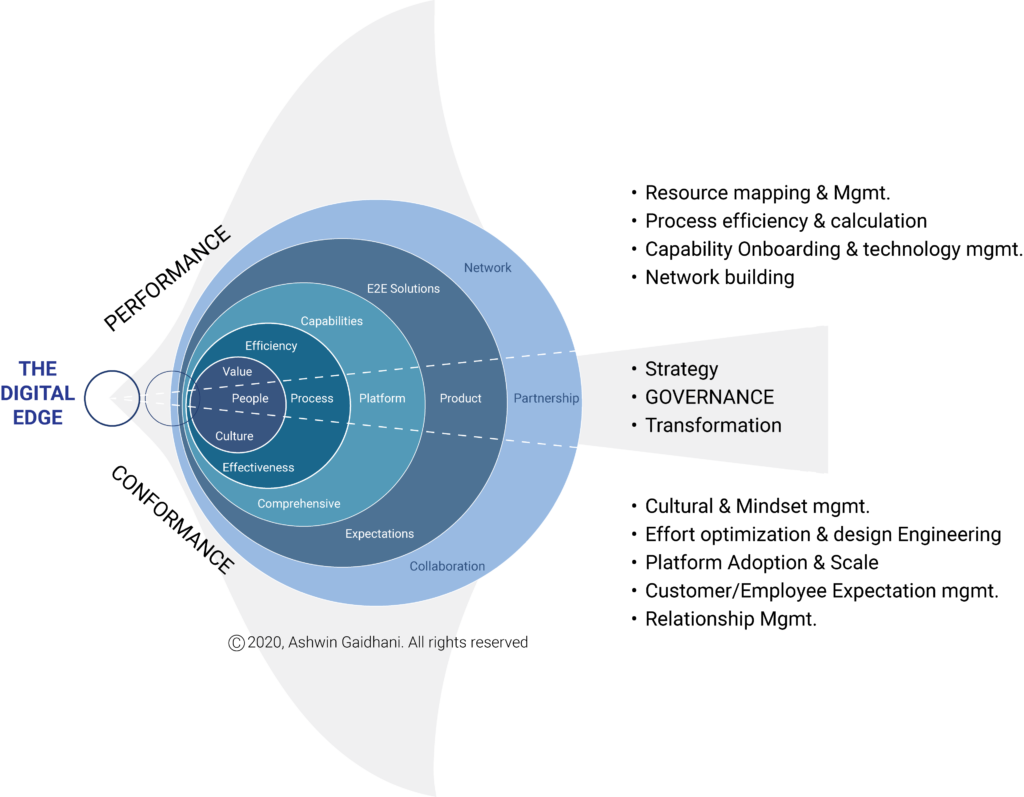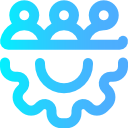The TI (Technology Innovation) Framework
TI (Technology Innovation) FRAMEWORK simplifies the complexities in business transformation initiatives by providing a pragmatic process framework & guidance for Digital Strategy Management.
Note: This is best viewed on desktop.
The TI (Technology Innovation) Framework integrates three critical dimensions: Governance, Conformance, and Performance. These pillars are supported by three key components—People, Process, and Platform—ensuring that organizations align their workforce, workflows, and technology for optimal outcomes.
At the core of the framework lies Digital Edge, which symbolizes the competitive advantage gained through the optimal integration of these elements. This holistic approach empowers organizations to navigate digital transformation with balance, ensuring they meet regulatory requirements, maintain high performance, and achieve strategic governance goals.

The Stingray Model

Comprehensive Framework for Business Transformation: Success Factors, Design Elements, and Control Mechanisms

BX (Business Transformation) Dimensions:
Three core areas that shape the success factors, driving holistic business transformation.

Work Design Constituents
A framework composed of five key elements that define how work is structured and executed.

Work Design Attributes
Ten critical aspects that support and enhance the work design constituents for optimal outcomes.

Attribute Processes & Checklists:
Ten structured processes and 25 checklist controls to ensure thorough oversight and execution efficiency.

BX (Business Transformation) Dimensions
Three core areas that shape the success factors, driving holistic business transformation.
- Governance focuses on strategic oversight, ensuring decisions are in line with organizational goals.
- Conformance emphasizes adherence to industry standards and regulations, safeguarding operational integrity.
- Performance prioritizes operational efficiency and effectiveness, driving business success.

Work Design Constituents
A framework composed of five key elements that define how work is structured and executed.
- People: The Core of Transformation
- Process: Achieving Efficiency and Effectiveness
- Platform: Enabling Comprehensive Capabilities
- Product: Delivering E2E Solutions
- Partnership: Building Strategic Networks

Work Design Attributes
Ten critical aspects that support and enhance the work design constituents for optimal outcomes.
- Resource Mapping & Management
- Process Efficiency & Calculation
- Capability/Onboarding & Technology Management
- E2E Solution Design & Product Management
- Network Building
- Culture & Mindset Management
- Enterprise Optimization & Design Engineering
- Platform Adoption & Scale
- Customer/Employee Expectation Management
- Relationship Management

Attribute Processes & Checklists
Ten structured processes and 25 checklist controls to ensure thorough oversight and execution efficiency.

